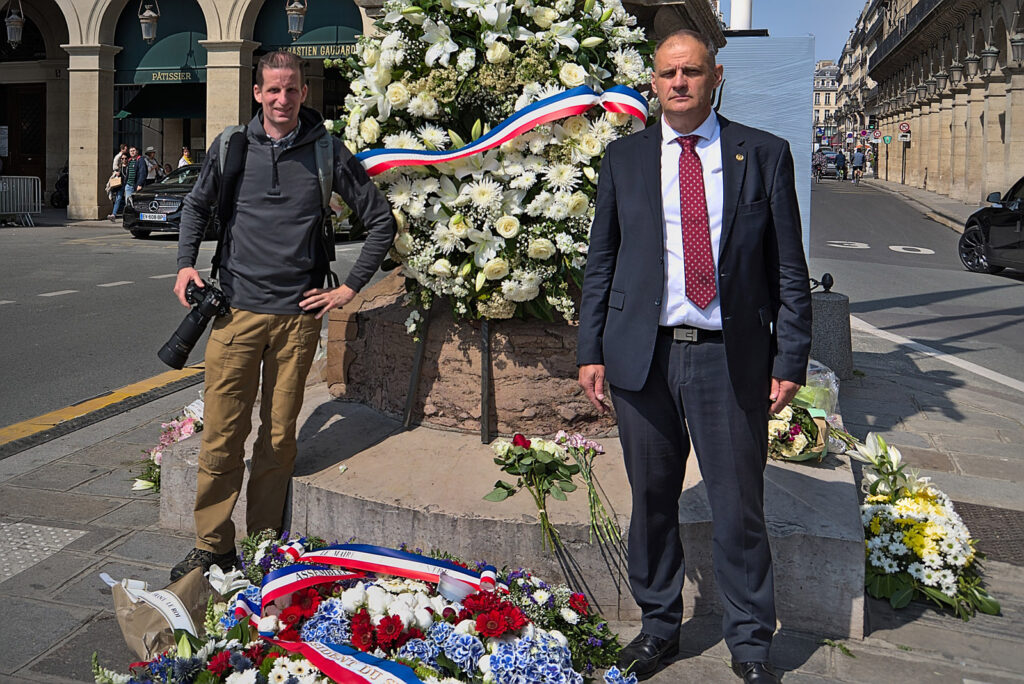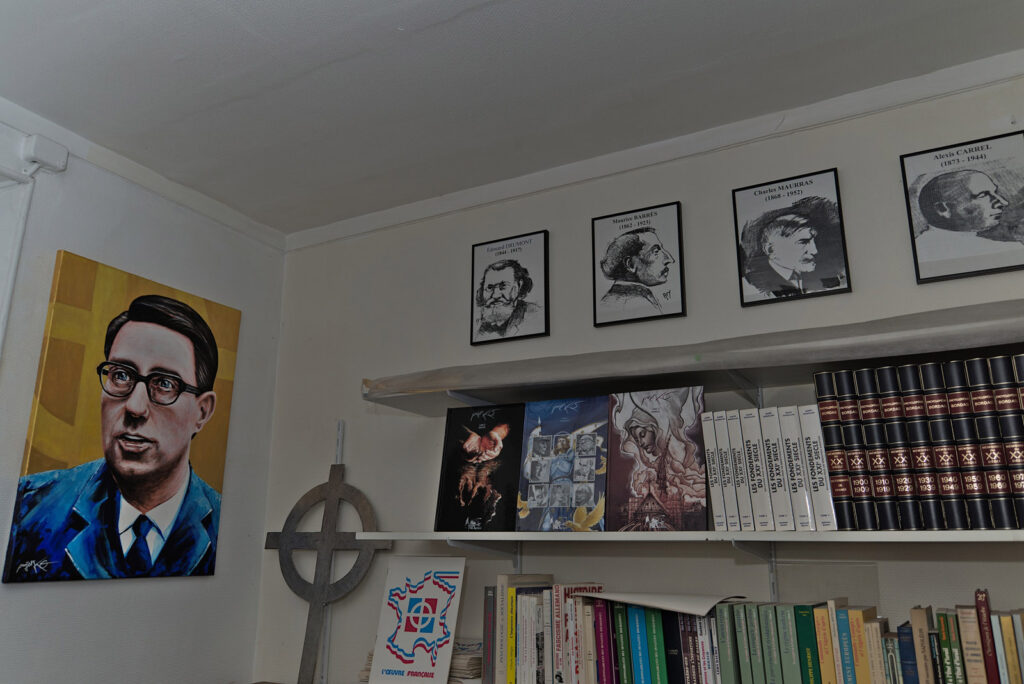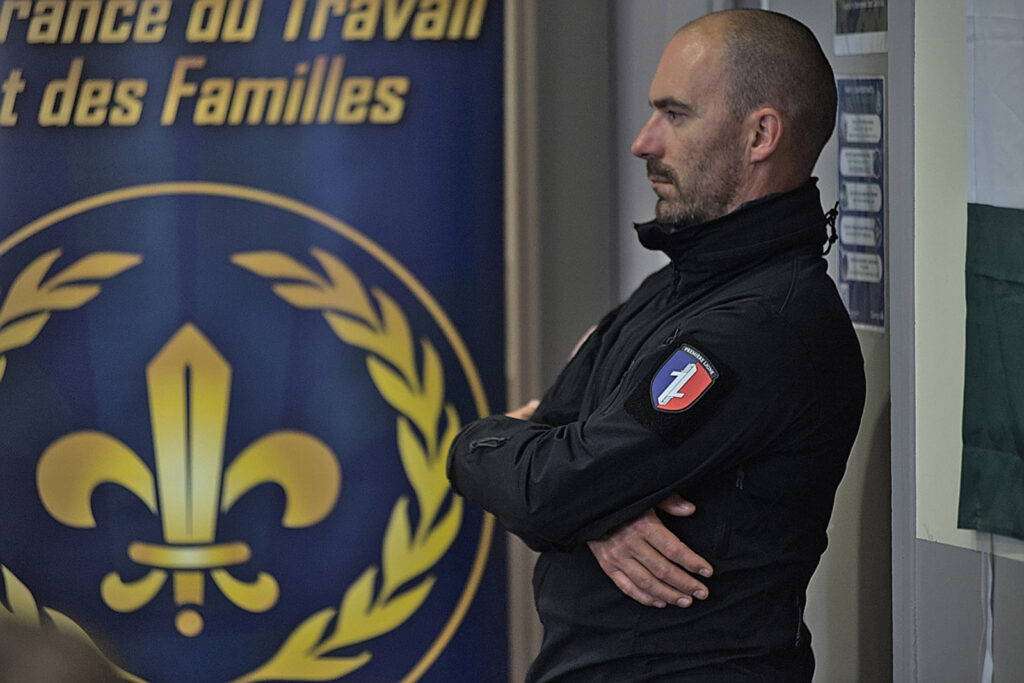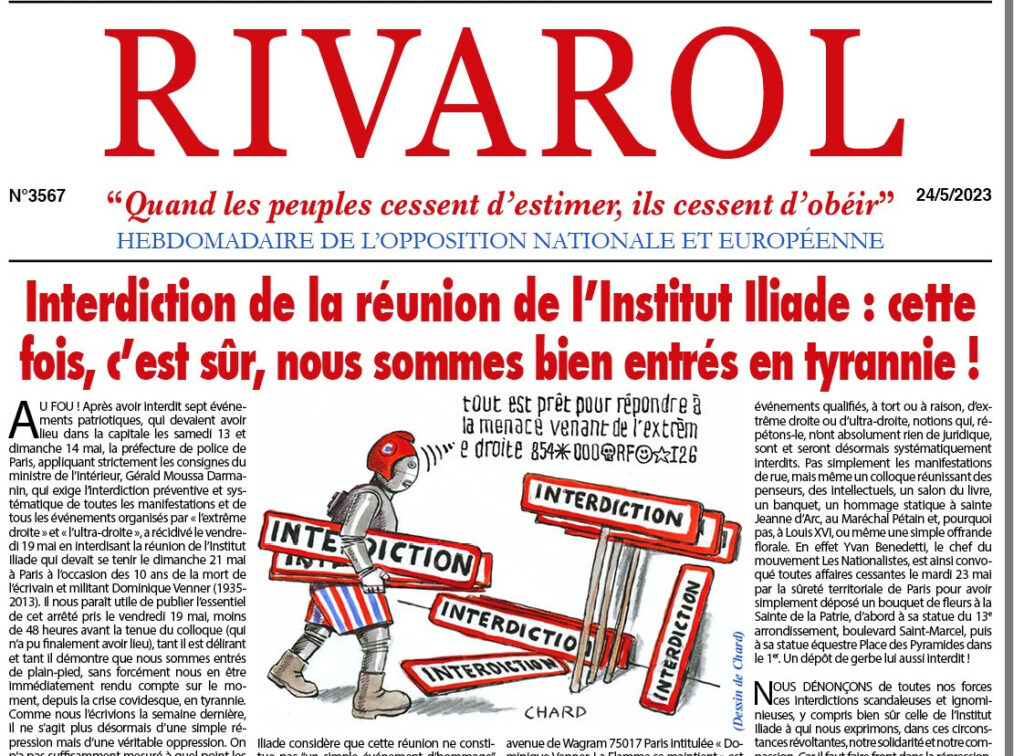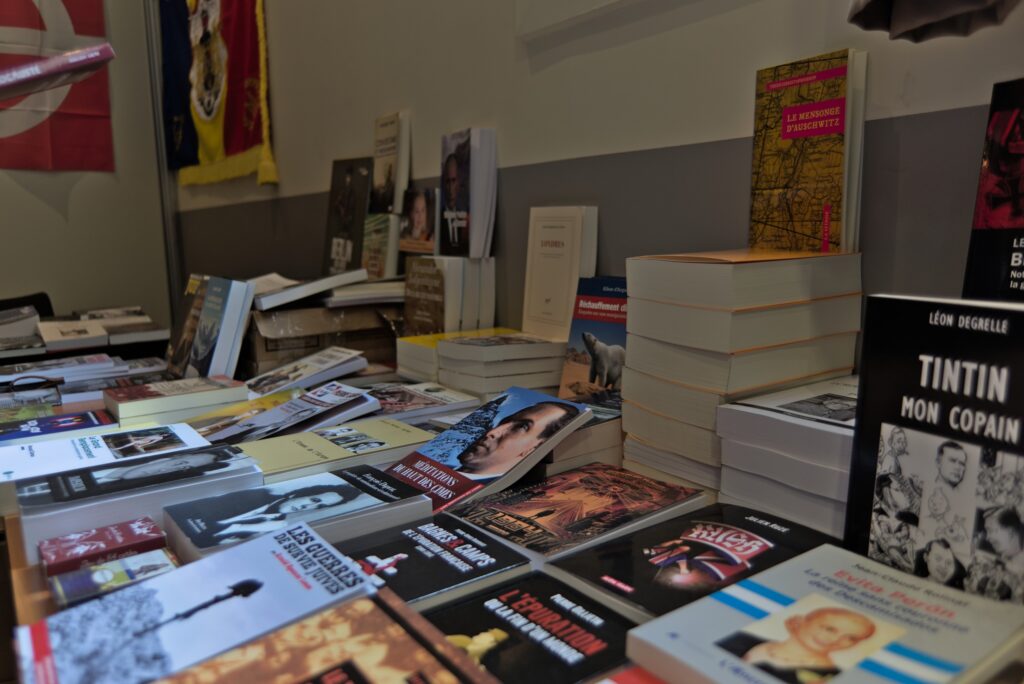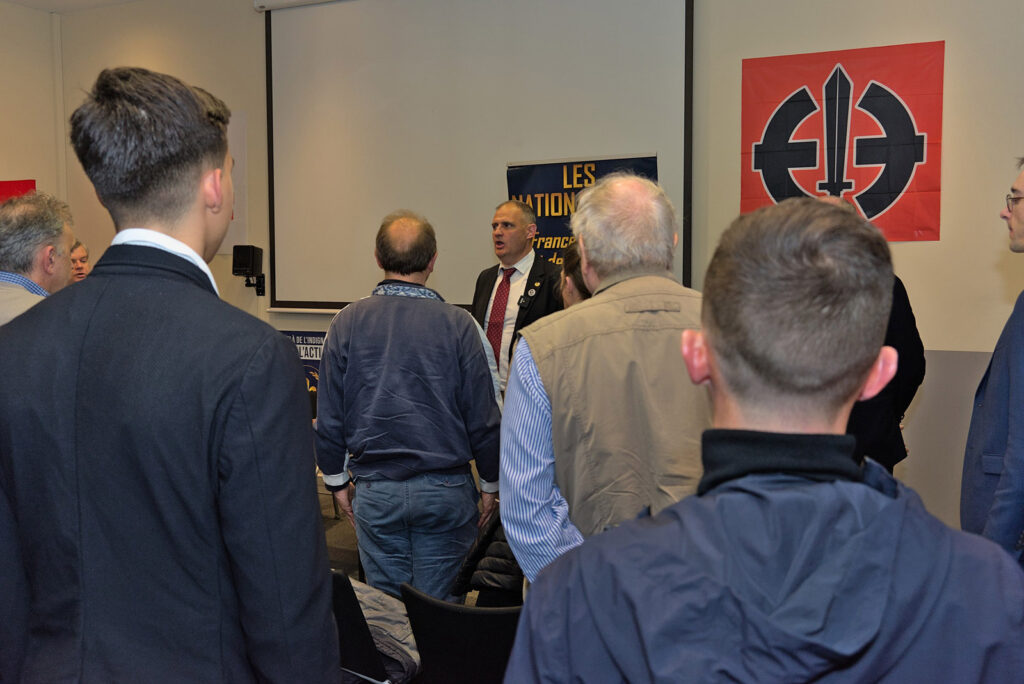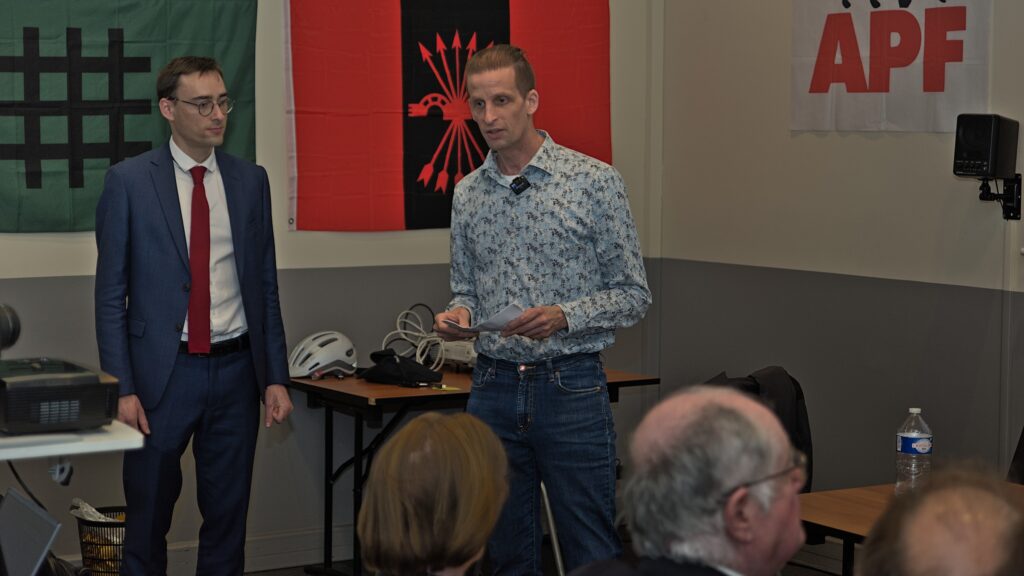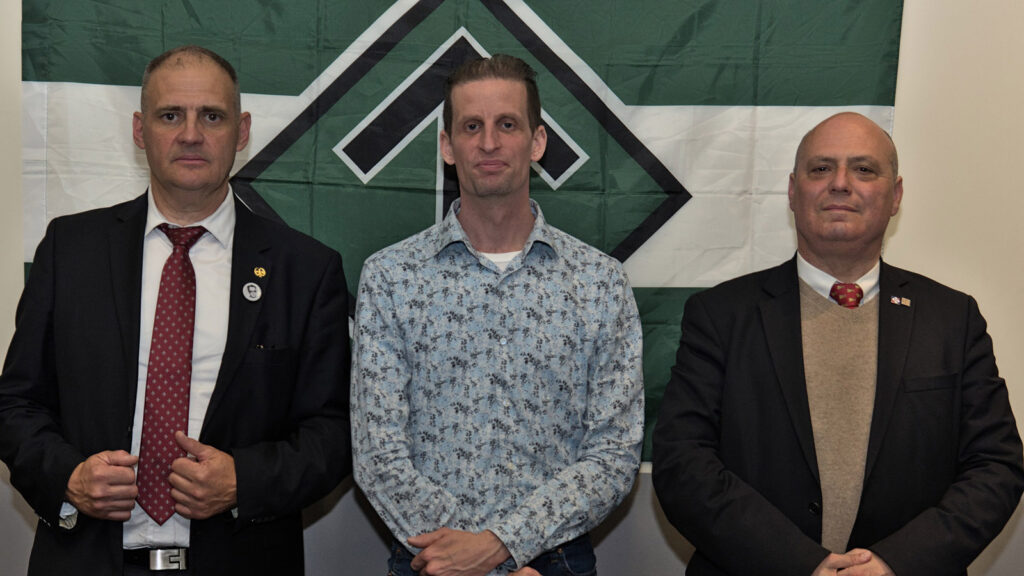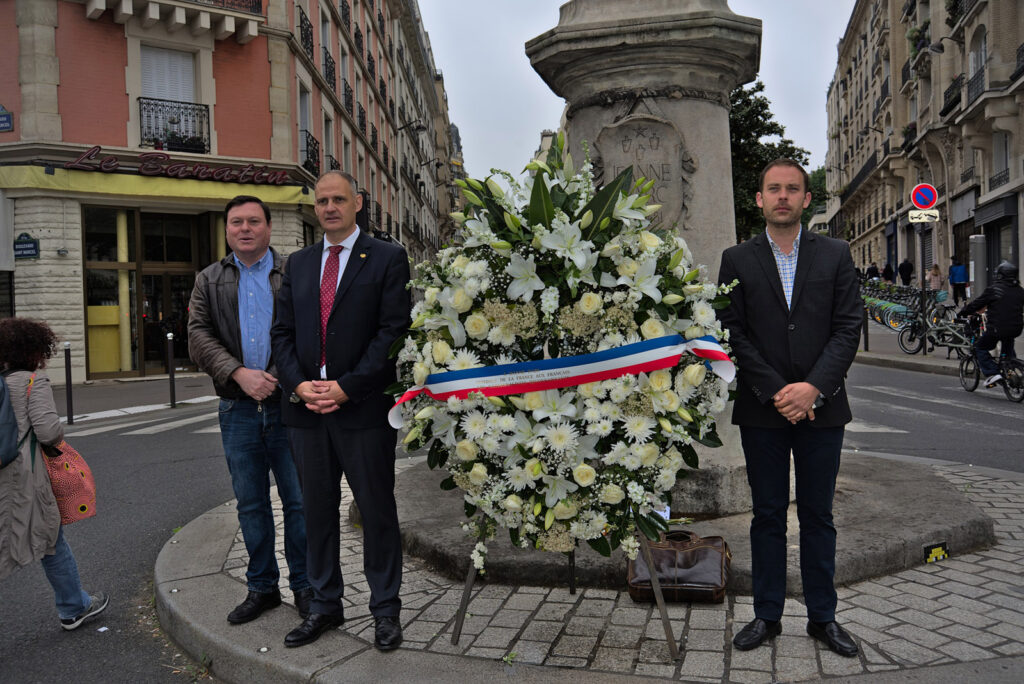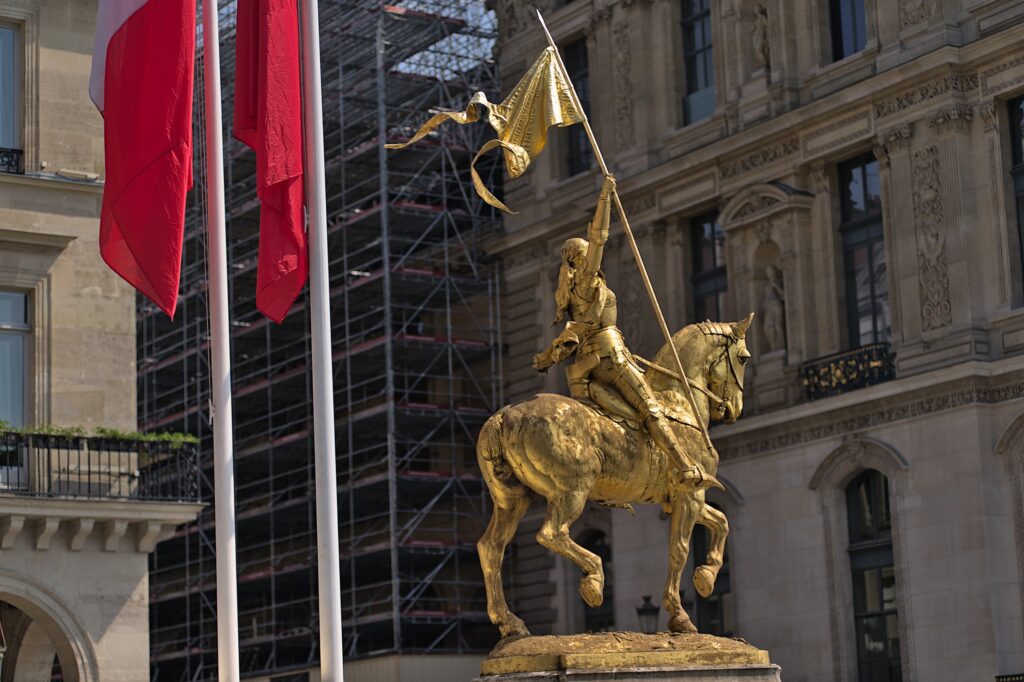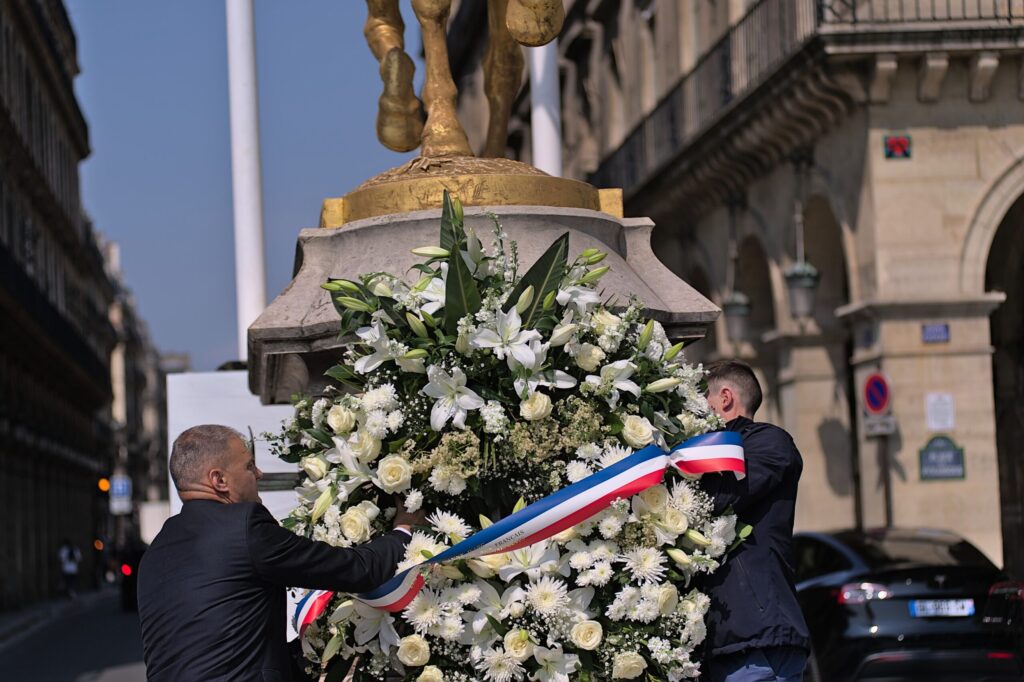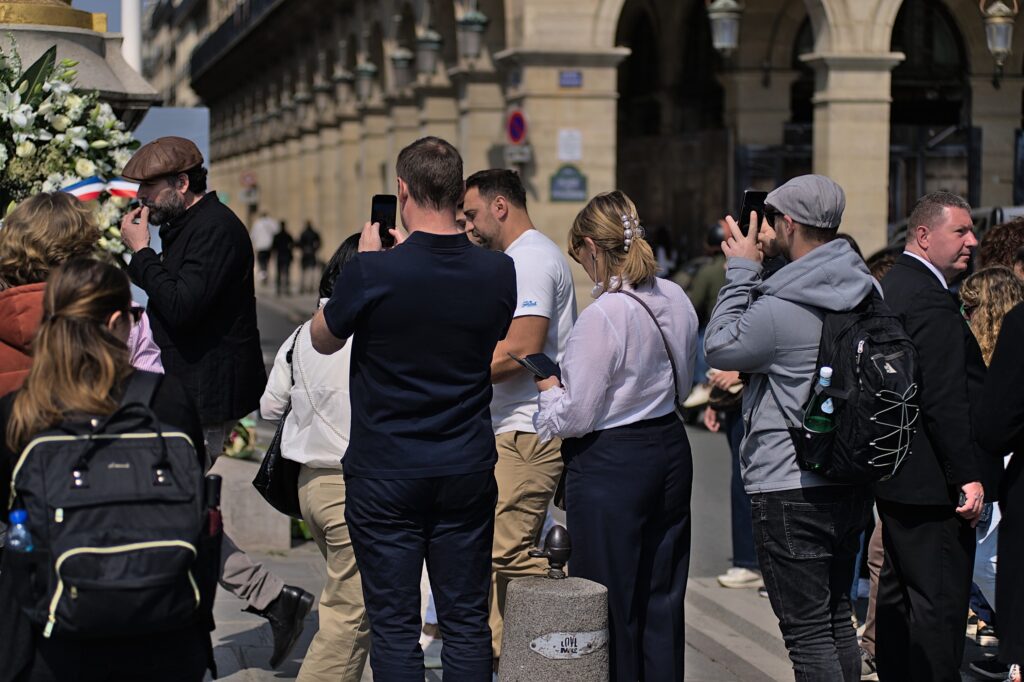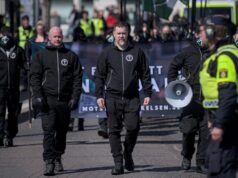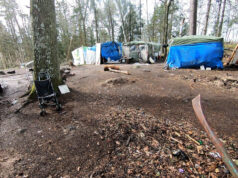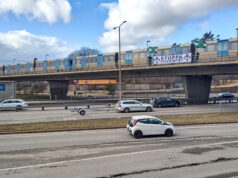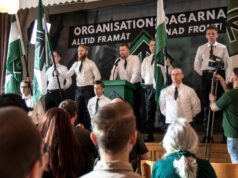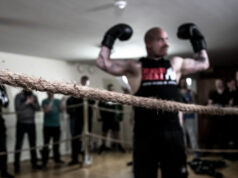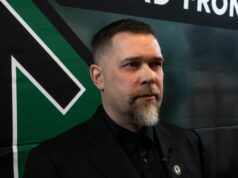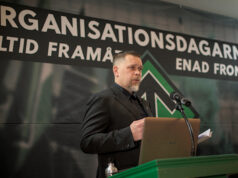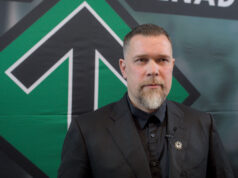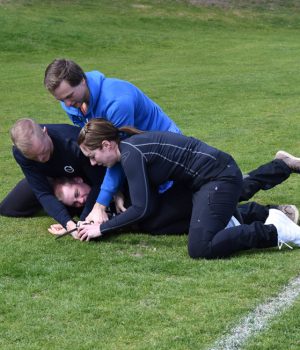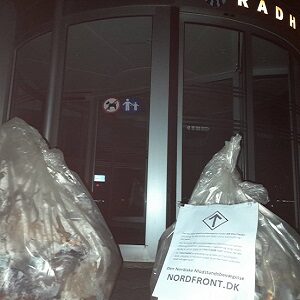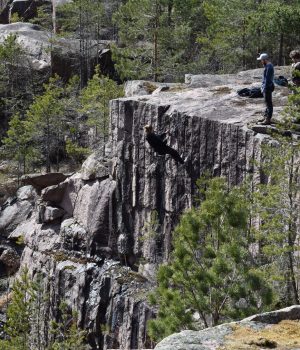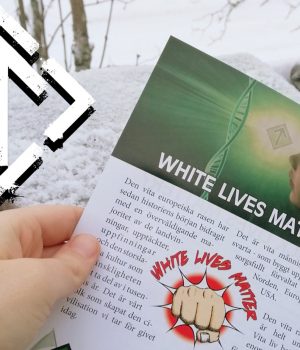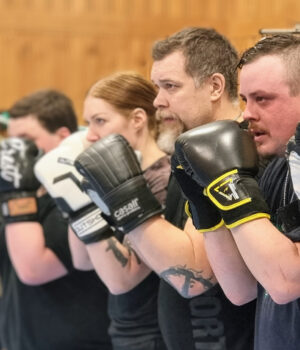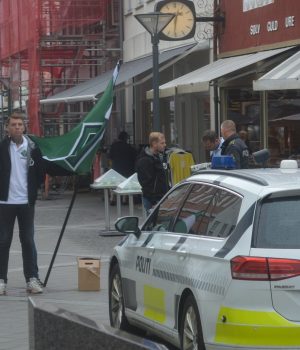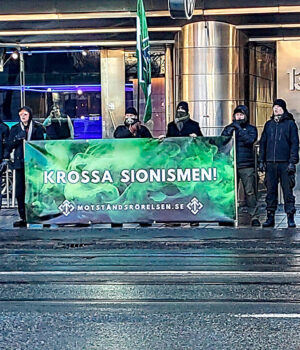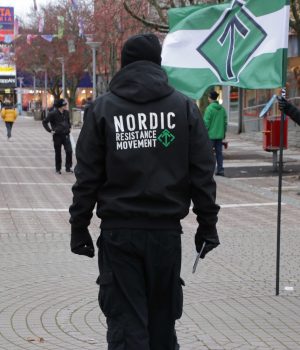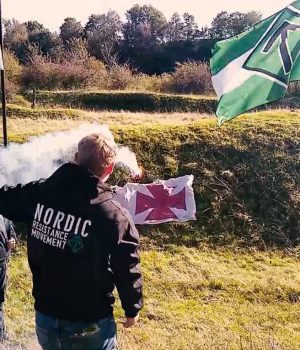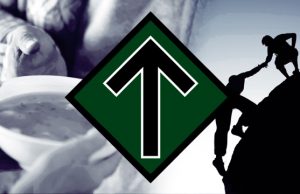RESISTANCE MOVEMENT. Henrik Pihlström gives a personal report from his visit to Les Nationalistes and Forum Europa.
Joan of Arc – or Jeanne d’Arc, as she’s known in France – is a national figure of unparalleled symbolic value for French nationality. The pious girl, who heard the voices of angels and led her troops through victorious wars, is both myth and historical fact. The image of Joan of Arc, who was canonised in 1920, is depicted in churches, while streets and squares bear her name. Likewise, her statues are found in multiple locations. On the second Sunday in May, French nationalists hold their traditional march for Joan of Arc, when they lay flowers and pay tribute to their national symbol.
This year, the authorities refused seven demonstration permits for events with a patriotic focus over the course of the weekend. There would quite simply be no “right-wing extremist manifestation” with Emanuel Macron’s regime calling the shots. In contrast to the larger demonstrations against the president – the “Yellow Vests” and the like – radical nationalist groups are unfortunately rather small and marginalised.
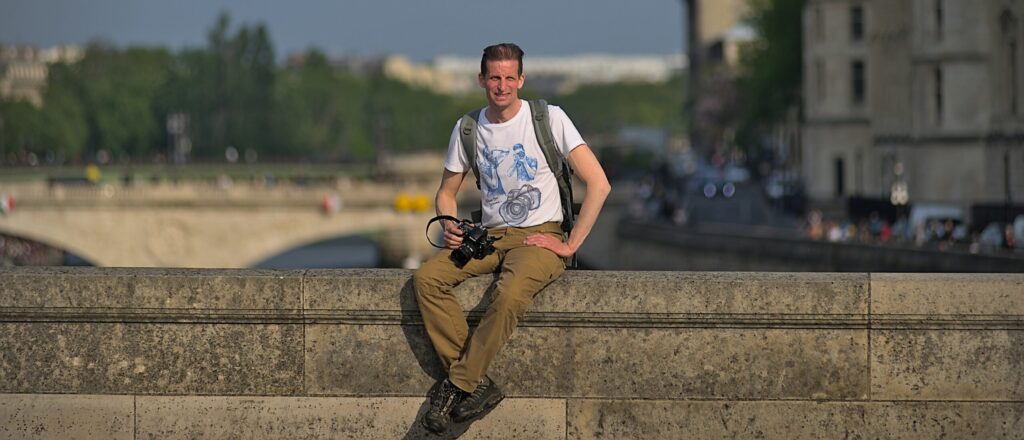
From the limited French I know, I found the debates on the CNews TV channel to be like something from another world. Subjects there are debated on a completely different level than would be possible in Sweden. I also recall how the former SVT state media personality (and current establishment critic) Chris Forsne conducted several interesting interviews in alternative media, describing the different media climate in France. With this in mind, if a French TV channel covers and criticises violent demonstrations by left-wing extremists, who shout about cutting the throat of Emanuel Macron, could the same TV channel not acknowledge the regime forbidding orderly demonstrations, such as the march for Joan of Arc?
No, the TV channel acts as a filter and despises “l’extrême droite”, especially political movements that talk about things other than the problems with Muslims. Jews must never be mentioned, it was explained to me. Instead, the TV channel insults radical nationalists. So the idea they would defend the right to demonstrate out of principle on a live broadcast is nothing more than a naïve hope. When these conversations took place between me and Yvan Benedetti, the leader of Les Nationalistes (The Nationalists), we found ourselves in an office in Paris, which the movement has utilised since 1968. In the office, planning was in full swing ahead of the weekend with Forum Europa on Saturday 13 May, and the “forbidden” march on Sunday for Joan of Arc.
Among the portraits adorning the office was one of Édouard Drumont. In addition to working as a writer and the chief editor for the daily paper La Libre Parole, Drumont is most known for his role in the Dreyfus affair, which shook the world over a century ago. The Jewish captain Alfred Dreyfus, who sold military secrets to the Germans; or, according to the alternative explanation, was a victim of an anti-Semitic conspiracy, is a subject that is deserving of further reading, for those interested. Yvan Benedetti proudly informed the people gathered in the office that I wrote a song about Édouard Drumont in Swedish.
Jerome Bourbon, who is the chief editor of the French newspaper Rivarol, was also there. The publication I was presented with is an ambitious creation, which amid the throng of other open information and targeted censorship will likely drown in the public consciousness. But those who actively seek knowledge at least have a platform. A later edition of the newspaper, published shortly after my travels to France, summarised the weekend in an editorial detailing the onset of tyranny.
Not only were seven patriotic demonstrations planned for the weekend stopped by Gérald Moussa Darmanin, the Ministry of the Interior, but more bans on future demonstrations and meetings await. The excerpt in the image above cites the memorial event planned on 21 May for Dominique Venner, a historian and writer who committed a high-profile suicide in Notre-Dame Cathedral ten years ago.
Friends and new acquaintances from other countries, including Plamen Dimitrov from the Bulgarian BNU, were introduced on Saturday 13 May at Forum Europa. Dimitrov himself could not attend in person but instead participated via a video greeting that was played to the audience. Due to the international nature of the event, everything not communicated in French was translated via an interpreter. Attendees from Switzerland and Belgium, such as Hervé Van Laethem, from the Belgian Mouvement Nation, naturally needed no such assistance.
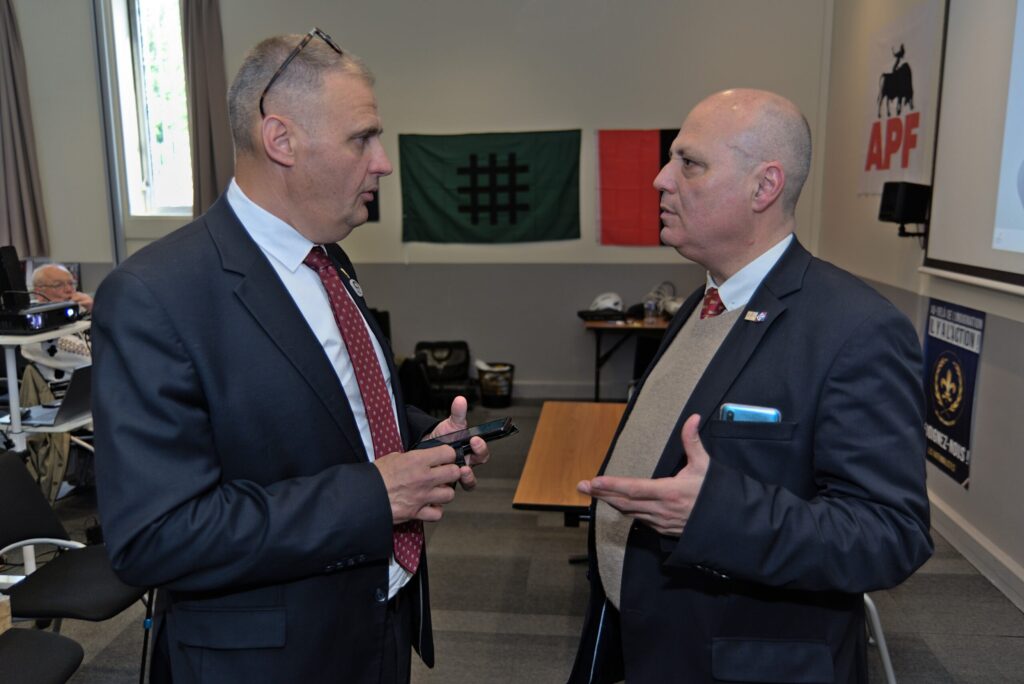
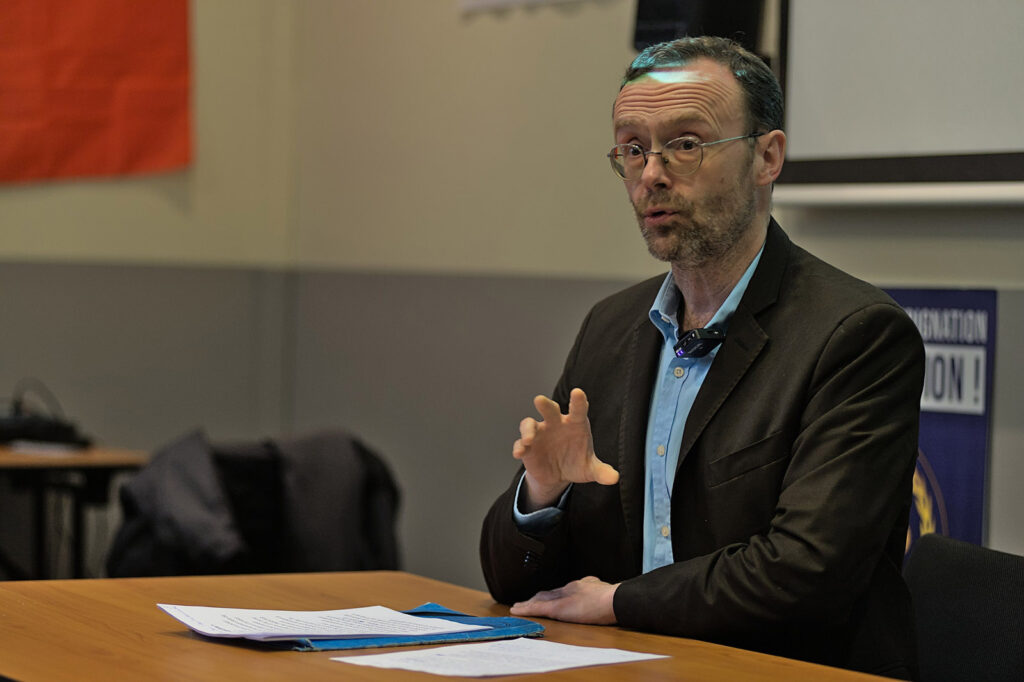
I was impressed by the passion and spontaneity exhibited by several Frenchmen when speaking in front of an audience. The flags of various organisations decorated the walls of the forum venue. Sales tables with the typical political content were complemented by a large selection of books, with highly interesting subjects for those looking to build a French library.
An artist and illustrator demonstrated his work both at the sales table and on stage. His book Cycles is a beautiful tribute to life and the family, in which praiseworthy quotes are interspersed with thought-provoking art. The departure from the modern world to the traditional and continuous that builds strong, complete people is the message I took from it.
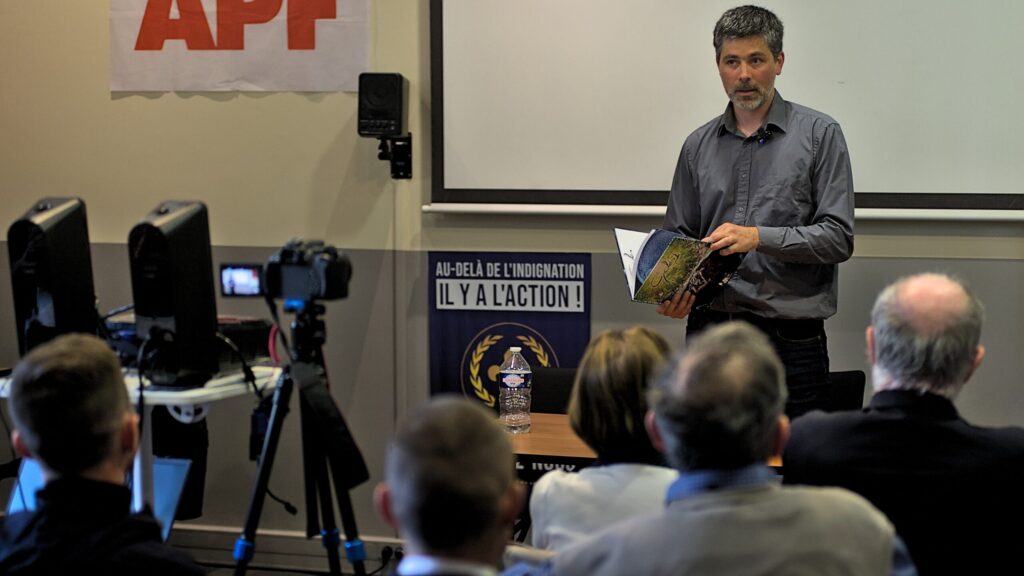
To provide the audience at Forum Europa with a Nordic influence, I held a speech, somewhat reluctantly in English. A part of the speech came from the leader of the Nordic Resistance Movement, Simon Lindberg. My intention was to make things easily understandable for those in the audience who couldn’t speak French. A skilled interpreter interspersed my words every few sentences with a French translation. The speech touched on Covid politics and other circumstances everyone in Europe can relate to. The ultimate message was that we must fight and sacrifice in order to gain success and victory.
In conclusion, we have the same liars within governments and states. The same threats against our freedom and very existence. The same struggle against the global oppressors.
Salut – for a new Europe without forced non-White migration. We need to fight or we will be murdered like the Frenchmen on the island Mayotte. In this regard we have no other choice!
I concluded with a heartfelt Merci beacoup! Genuine applause followed. Several attendees thanked me afterwards and also wanted to have their photo taken with the northern speaker.
As previously mentioned, Joan of Arc has various places named after her. The famous gold statue of France’s national symbol in the centrally located Place des Pyramides is a particular highlight. On Sunday morning, activists investigated the possibility of an improvised event at the site, which was originally intended to feature in the Joan of Arc march. They observed heavy police surveillance and – with the ban in mind – a backup plan was announced the day before: La place Jeanne-d’Arc – a neighbourhood in the thirteenth arrondissement of Paris with a magnificent church that leads to another statue via the Rue de Jeanne d’Arc.
At the entrance to the church, I was noticed by a woman who was at Forum Europa. We conversed in simple French and made a joint visit to the main hall, minutes before mass began. The churchgoers filled up the pews while we looked around the interior: the lit candles, the great organ and of course the sculpture of Joan of Arc herself. The woman was a believer and told me – as I anticipated – that she did not recognise the regime after the Second Vatican Council. The others arrived at the church just before mass, and we accordingly proceeded towards the statue of Joan of Arc.
Police surveillance was absent at the alternative statue. Individual police cars passed by. The intersection at the statue was occupied by a gathering of nationalists. A wreath was laid and Yvan Benedetti gave a speech. Everything happened without hindrance.
Afterwards, we were invited to a gathering at the office, and I squeezed into a small Peugeot, which, judging by its diminutive size, was clearly designed for city life. Food and (unsurprisingly) wine were served. When everyone was full and content, I was offered another opportunity, which, considering everything that had happened thus far, would be the icing on the cake: a visit to the golden statue!
So after all the trips we had made, we finally did what we were supposed to do. A few metro stops with Yvan Benedetti, a small group of assistants and the energetic lawyer Pierre Marie Bonneau, left us with just a short walk ahead. Next we were at the spot where the evening sun illuminates the saint in gold. A wreath featuring inscriptions from French Nationalists was prominently attached to the plinth of the statue.
The police surveillance had ended and Yvan Benedetti gave another speech, which was filmed. It would be a short visit, as surveillance cameras were no doubt documenting proceedings and their operators were likely to alert the authorities about our audacity to pay tribute to the French national saint. However, I made sure to rush back with my camera to get a shot of all the curious onlookers.
Back at the office, our company from earlier was waiting to hear our victory story. People eventually left the capital to return to their respective regions via express trains and vehicles. Finally, I practised the southern countries’ habit of kissing all the young and older ladies à bientôt on the cheek.


